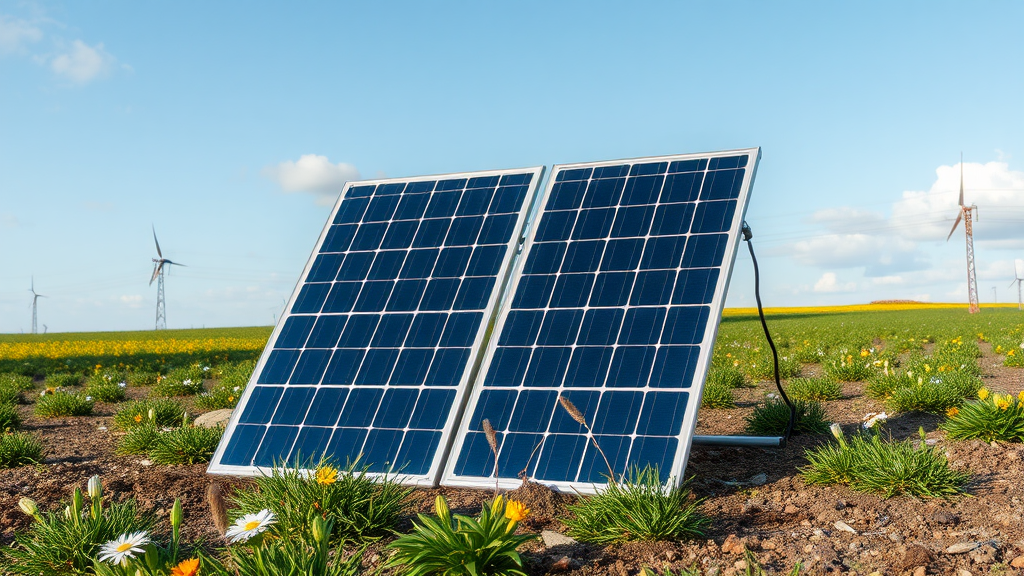Physical Address
304 North Cardinal St.
Dorchester Center, MA 02124
Physical Address
304 North Cardinal St.
Dorchester Center, MA 02124

Powering Your Energy Solutions with 4 Solar Panels in a 24V Configuration
Setting up a solar panel system requires careful planning and precise electrical connections. When working with 4 solar panels in a 24V system, understanding the right approach can maximize your energy efficiency and performance.
Solar panel configurations depend on two primary connection methods:
For a 24V system, you’ll typically need to combine these connection strategies strategically.
Before beginning your installation, gather these critical components:
Check out one of the top rated solar panel kits here – https://www.healthrefreshed.com/offgrid-solarkits
| Equipment | Purpose |
|---|---|
| Solar Panels | Primary energy generation source |
| Charge Controller | Regulates electricity flow and prevents battery overcharging |
| Inverter | Converts DC power to usable AC power |
| Mounting Hardware | Secures panels in optimal position |
To create a robust 24V system with 4 solar panels, consider these connection approaches:
When connecting panels in series:
Parallel connections offer:
Proper wiring is crucial for system performance. Consider these factors:
Check out one of the top rated solar panel kits here – https://www.healthrefreshed.com/offgrid-solarkits
Solar installations demand rigorous safety protocols:
For more detailed guidance, explore these expert resources:
Maximize your 4-panel 24V solar system’s efficiency by:
Implementing these strategies ensures a robust, reliable solar energy solution tailored to your specific energy requirements. Careful planning, precise execution, and ongoing maintenance will help you achieve optimal performance from your solar panel system.
When setting up a solar panel system, understanding the correct wiring techniques is crucial for maximizing performance and efficiency. For a 24V system using 4 solar panels, careful connection methods can significantly impact your overall energy generation and system reliability.
Check out one of the top rated solar panel kits here – https://www.healthrefreshed.com/offgrid-solarkits
Connecting your solar panels requires strategic planning. In a 24V system, you’ll typically want to create a configuration that increases voltage while maintaining appropriate current levels. Here are the primary connection approaches:
When connecting 4 solar panels for a 24V system, you’ll need to consider individual panel specifications. Most 12V panels require two panels connected in series to achieve the desired 24V output. This means carefully matching panel specifications and understanding voltage multiplication.
Wire Selection Criteria
Selecting the right wire is critical for system performance. Recommended specifications include:
Check out one of the top rated solar panel kits here – https://www.healthrefreshed.com/offgrid-solarkits
| Wire Gauge | Maximum Current | Recommended Distance |
|---|---|---|
| 10 AWG | 30 Amps | Up to 50 feet |
| 8 AWG | 50 Amps | Up to 75 feet |
Implementing proper safety measures prevents potential electrical hazards. Always:
Your 24V system requires a compatible charge controller to manage energy flow. Recommended features include:
Practical Wiring Techniques
When connecting 4 solar panels, consider these advanced strategies:
Check out one of the top rated solar panel kits here – https://www.healthrefreshed.com/offgrid-solarkits
To maximize solar panel efficiency, consider:
Useful Resources:
Solar Energy Information Portal
National Renewable Energy Laboratory
Professional Recommendations:
While DIY installation is possible, consulting a certified solar installation professional ensures optimal system design and compliance with local electrical codes. They can provide personalized guidance specific to your energy requirements and geographic location.
Check out one of the top rated solar panel kits here – https://www.healthrefreshed.com/offgrid-solarkits
Invest in monitoring systems that track:
By following these comprehensive wiring techniques, you’ll create a robust 24V solar panel system that delivers consistent, reliable renewable energy for years to come.
Successfully connecting four solar panels in a 24V system requires careful planning, precision, and understanding of electrical configurations. By implementing the wiring techniques discussed, you can create a robust and efficient solar energy setup that maximizes power generation and system reliability.
The key to optimal performance lies in proper series and parallel connections, selecting appropriate wire gauges, and ensuring secure electrical junctions. Remember that each connection point represents an opportunity to enhance or potentially compromise your solar system’s overall effectiveness.
Investing time in understanding the nuanced aspects of solar panel connectivity will pay significant dividends in long-term energy production. Homeowners and solar enthusiasts who meticulously follow recommended wiring practices can expect improved system durability, enhanced electrical safety, and more consistent power output.
Check out one of the top rated solar panel kits here – https://www.healthrefreshed.com/offgrid-solarkits
While the process might seem complex initially, breaking down the connection strategy into systematic steps makes the task manageable. Always prioritize safety by using appropriate protective equipment, consulting professional guidelines, and potentially seeking expert advice during installation.
Your 24V solar panel system represents more than just an electrical setup—it’s a commitment to sustainable energy production. By mastering these connection techniques, you’re contributing to a greener future while potentially reducing long-term energy costs.
As solar technology continues evolving, staying informed about best practices in panel connectivity will remain crucial. Continue learning, remain curious, and approach your solar project with both technical precision and environmental enthusiasm.